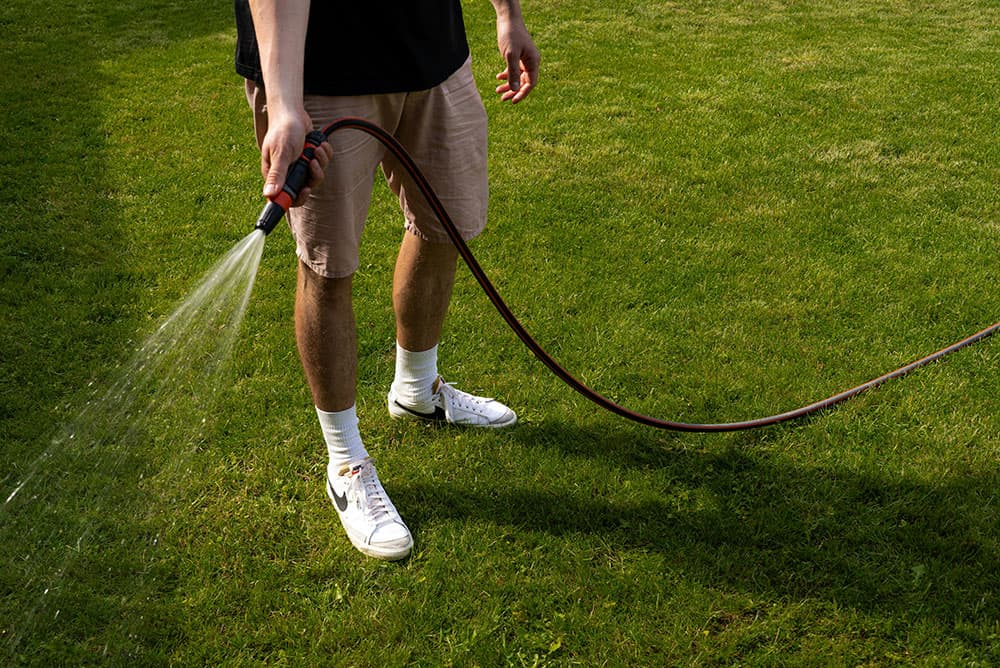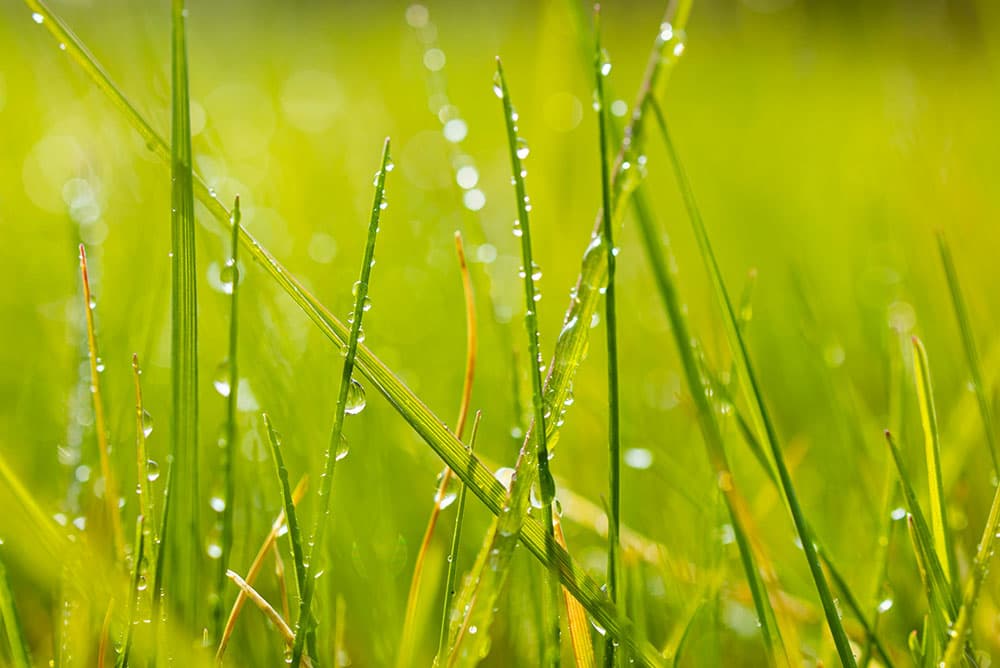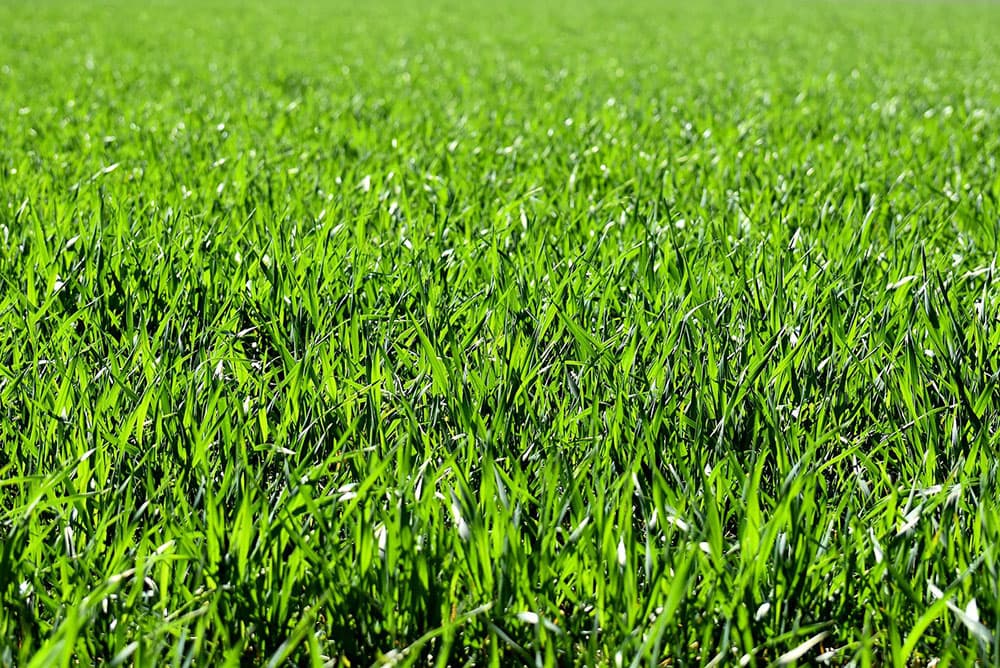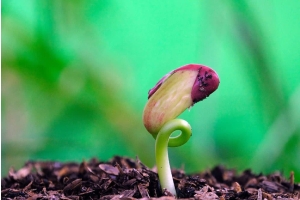Lawn Care Calendar: How to Care for Your Lawn in Spring and Summer

In the UK, we have the privilege of enjoying four distinct seasons each year. Over time, we see our natural spaces in a new light as they grow and evolve. Although this experience is rewarding, the constant flux demands a swift and attentive approach to lawn care.
Our month-by-month lawn care calendar lets you keep track of everything you need to know during the active growth seasons of spring and summer. With this guide, you'll be well-equipped for seasonal changes and able to maintain a dynamic lawn care routine. Save this article to keep all essential tasks at your fingertips and ensure your lawn remains lush, green and healthy year-round.
Spring Lawn Care UK Checklist

Spring is when the garden awakens. Flowers blossom, trees bud, animals emerge from hibernation, and the air starts to warm. Springtime lawn care tasks reflect these themes of fresh starts and rejuvenation, with many jobs focusing on laying the groundwork for healthy, consistent growth in the coming season.
This season of renewal is also the perfect time to embark on new projects. Whether creating a new compost heap to recycle the season's garden waste or carving out a new pond to attract more wildlife, now is the time to set it in motion.
Tasks For March
The clocks go forward in March, giving us gradually lighter mornings and evenings as the year unfolds. Use this extra daylight to squeeze in the following jobs and set your lawn up for success.
- If the weather is mild, you can aerate and scarify your lawn. If you're unsure, waiting until April is advisable.
- In March, tiny moss spores start to germinate. Apply moss treatment early to nip this in the bud. Also, start weeding to reduce any competition for nutrients and moisture.
- Commence your first cut of the year! Mow regularly, but don't reduce the height of the lawn too much, as frost can still strike in March. We recommend setting the mower blades reasonably high to help thicken the grass.
- Cut back and neaten the borders of your lawn. While the ground is soft, use lawn edge trimmers or shears to tidy up and set the benchmark for the growing season.
Tasks For April
By April, spring is in full swing. It should be warm enough for renovations, such as scarification and aeration, to be carried out safely. Also, at this point, your grass will be initiating its reproductive cycle, and your lawn will require a lot of nutrients.
- Gradually start lowering your blade height when you mow. Remember that dropping the blades too much too quickly risks stressing the grass and making it vulnerable to disease. Also, trim the edges to give a clean and manicured look.
- Cut and remove debris from a lawn. You may need to rake your lawn to remove moss and encourage grass to grow more vigorously. Once your lawn is clear, it’s time to aerate. This will improve oxygen levels, move water off the surface and allow nutrients to penetrate deep into the soil to promote good root growth. Aerating is especially important if your lawn has endured heavy rains over winter.
- Spring and autumn are the best times to repair thinning grass patches or start a lawn renovation. In ideal conditions, germination takes 7 to 21 days. Sow grass seed directly into your lawn or apply topsoil, then spread the seeds to enjoy a thicker, fuller lawn.
- April is a great time to feed the grass with a turf fertiliser mix. This process provides a balance of nutrients that will slowly release throughout the rest of the season, making your grass greener and tougher. Water the grass thoroughly to wash the fertiliser into the soil and improve root uptake.
Tasks For May
There are two approaches to May: continue establishing a regular mowing schedule or experiment with initiatives like ‘No Mow May’.
- May is a month when your lawn rapidly grows. If you prefer the look of a closely cut lawn, sharpen your mower blades and reduce their height. Mow little and often to achieve your desired look without stressing the grass.
- Assess areas for improvement. You could apply a spring and summer lawn feed, aerate again if the lawn is very compacted, or spot-treat weeds if necessary. When tackling weeds, always use weed killer products that claim to 'kill weeds, not lawns' to avoid damaging surrounding areas.
Alternative: Participate in 'No Mow May'

The conservation charity 'Plantlife' started the 'No Mow May' movement in 2019 and encourages gardeners to put down their lawnmowers for a month.
This small act promotes growth and provides habitat and food for pollinators and wildlife to thrive. You'll see your garden buzz with activity and receive all the benefits of supporting biodiversity, which is great if you’re growing flowers or vegetables alongside your lawn.
Summer Lawn Care UK Checklist

By summertime, your garden should be in full bloom, and your lawn should reap the rewards of intense spring preparation. Hopefully the weather allows you to sit and admire your hard work. Consider incorporating these maintenance tasks into your sunbathing breaks to keep your lawn healthy throughout the summer.
Tasks For June
After the hard work of spring, June generally requires only light maintenance tasks. However, stay alert for drought alerts. If one occurs, you'll need to prepare and react accordingly.
- With the hotter months in swing, it's a good time to double-check that your irrigation equipment is in good working order. If you're going on holiday, look for an irrigation system with a scheduled timer or controller so it can function without you being present.
- Although we hope you're kicking back and enjoying your outdoor space, try to keep a loose mowing routine. Mow around every two to three days, and remember to raise the cutting height of your mower. Trim the edges and reshape your lawn if necessary. Lower the mowing frequency if there’s a chance of drought. Longer grass shades the soil, keeping it cool and reducing water lost to evaporation.
- Extensive watering is usually unnecessary in June. However, light sprinkling can help revive your lawn during drier spells.
Tasks For July
Soaring July temperatures can cause grass to brown and dry out. This process is normal, but if you want your lawn to stay green, you must water it to prevent scorching. Additionally, stay alert for Red Thread, a fungal disease that thrives in hot, humid conditions and can affect your lawn during this time.
- Regular mowing is the key to a great lawn. At this time of year, the frequency can be relaxed to at least every 10 to 14 days for a well-groomed appearance. If the lawn is dry, lift your mower blades higher to avoid stressing the grass, and be prepared to sharpen or swap blades to maintain a clean cut. Equally, brush, scrape, or hose down your lawnmower if the cut grass is damp.
- Red Thread is a fungal disease that causes grass to become blotchy and brown. It thrives in humid conditions and is common from May onwards, with outbreaks potentially intensifying in July's intensely warm weather. To combat Red Thread, maintain a good supply of nitrogen to stimulate growth and use a fertiliser with potassium. If you water your lawn this month, water in the morning to prevent or reduce the spread of this fungus.
- Weeds are a constant challenge. If you’ve been consistent with weed control, continue spot-treating individual weeds or manually removing them with hand tools. Avoid applying weed killer to dry or parched lawns.
Tasks For August
Many consider August one of the best months on the lawn calendar. Grass growth slows, and you can use the long, light-filled evenings and mornings to tend to your garden at a more relaxing pace. However, if you're eager to keep the momentum going, use this time to plan for autumn.
- Keep watering if that has become part of your lawn care routine. August is another excellent time to spot-treat any opportunist weeds. Mow the grass if needed, but be careful not to scalp the lawn.
- August is the breeding season for crane flies, the parents of leatherjackets. If you notice increased crane fly activity around your lawn, it's time to act. Invest in biological insect control solutions, like nematodes, to reduce the risk of a leatherjacket infestation striking next spring.
- This month and the following month are excellent times to start a new lawn from seed and plant on prepared ground. Be ready to water the new grass if the weather turns dry to ensure successful germination and growth.
- Get things in order for the approaching change of season. Start by raising the mowing height, thinning trees or plants that reduce light, and aerating the lawn to improve drainage. If your lawn is a little lumpy, order a supply of topdressing material ready to apply in autumn.
Ensure Efficient Lawn Care with LBS Horticulture
So there you have it—your comprehensive lawn care calendar for spring and summer! If you have any questions or need help using specific products, our team of experts is on hand to assist. Please don’t hesitate to contact us for advice and guidance. You can email us, call our support line, or leave a message via our online contact form, and we’ll get back to you as soon as possible.
Otherwise, visit our extensive lawn care product range to stock up on essentials, or explore our blog for additional tips and expert horticulture advice.





